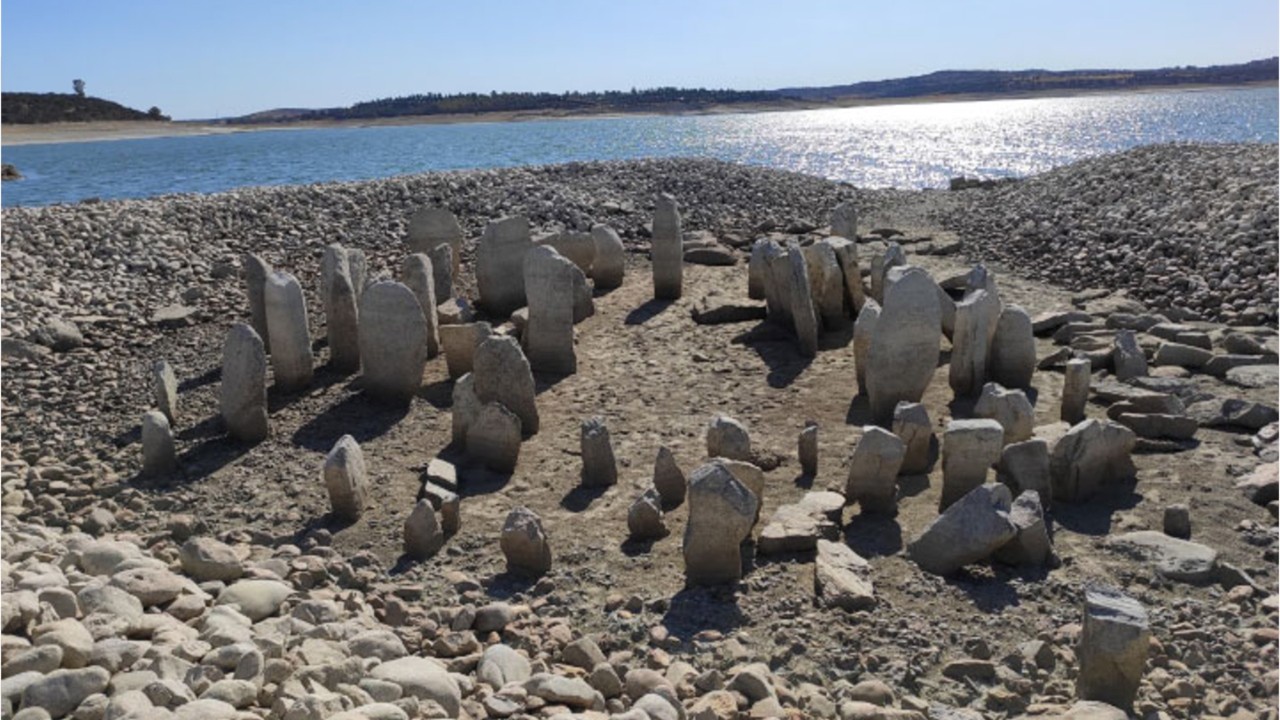Drought conditions reveal ancient ‘Spanish Stonehenge’ along reservoir in Spain

Drought conditions reveal ‘Spanish Stonehenge’
Intense drought conditions in Spain this summer revealed a Spanish Stonehenge built along a reservoir thousands of years ago.
SPAIN - As Spain experienced another intensely dry summer, the drought conditions unearthed an ancient circle of stones dubbed the “Spanish Stonehenge.”
Known as the Dolmen of Guadalperal, the 7,000-year-old granite stones appeared as the waters receded from the Valdecanas Reservoir.
In 1963, the Spanish government built the reservoir while under the rule of Francisco Franco, according to NASA Earth Observatory. The reservoir brought water and electricity to underdeveloped parts of Spain, but it also flooded inhabited areas.
But 50 years later, the stones surfaced. It appears to be a circle of more than 100 rocks placed in an upright position along the water’s edge. The spot could have been a tomb, site for religious rituals or trading space since it was so close to the water, according to NASA Earth Observatory.
Satellite images taken from Landast 8 showed the water levels from July 24, 2013. In an image from July 25, 2019, lighter brown spots marked where the waters receded because of the dry weather conditions.
NASA Earth Observatory reported that many parts of Europe experienced drought conditions this summer, as well as intense heatwaves in June and July.
For Spain, it experienced its third-driest June within the last century and dealt with above-average temperatures in July and August.
A group of residents is pushing for relocation of the stones to preserve the ancient piece. A symbol on one of the stones also appears to be a map, which could make it one of the oldest map on Earth, according to NASA Earth Observatory.
This story was reported from Los Angeles.

